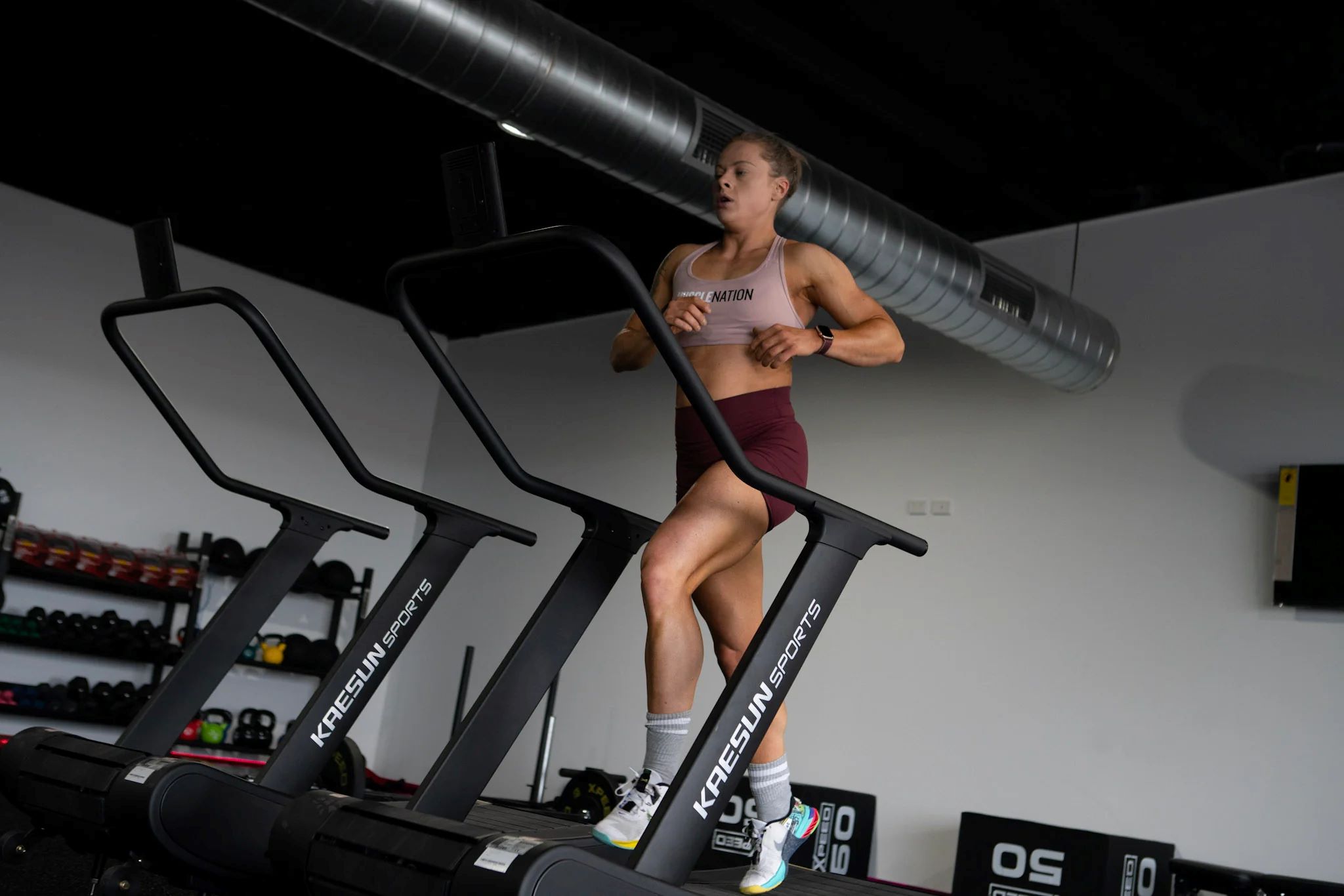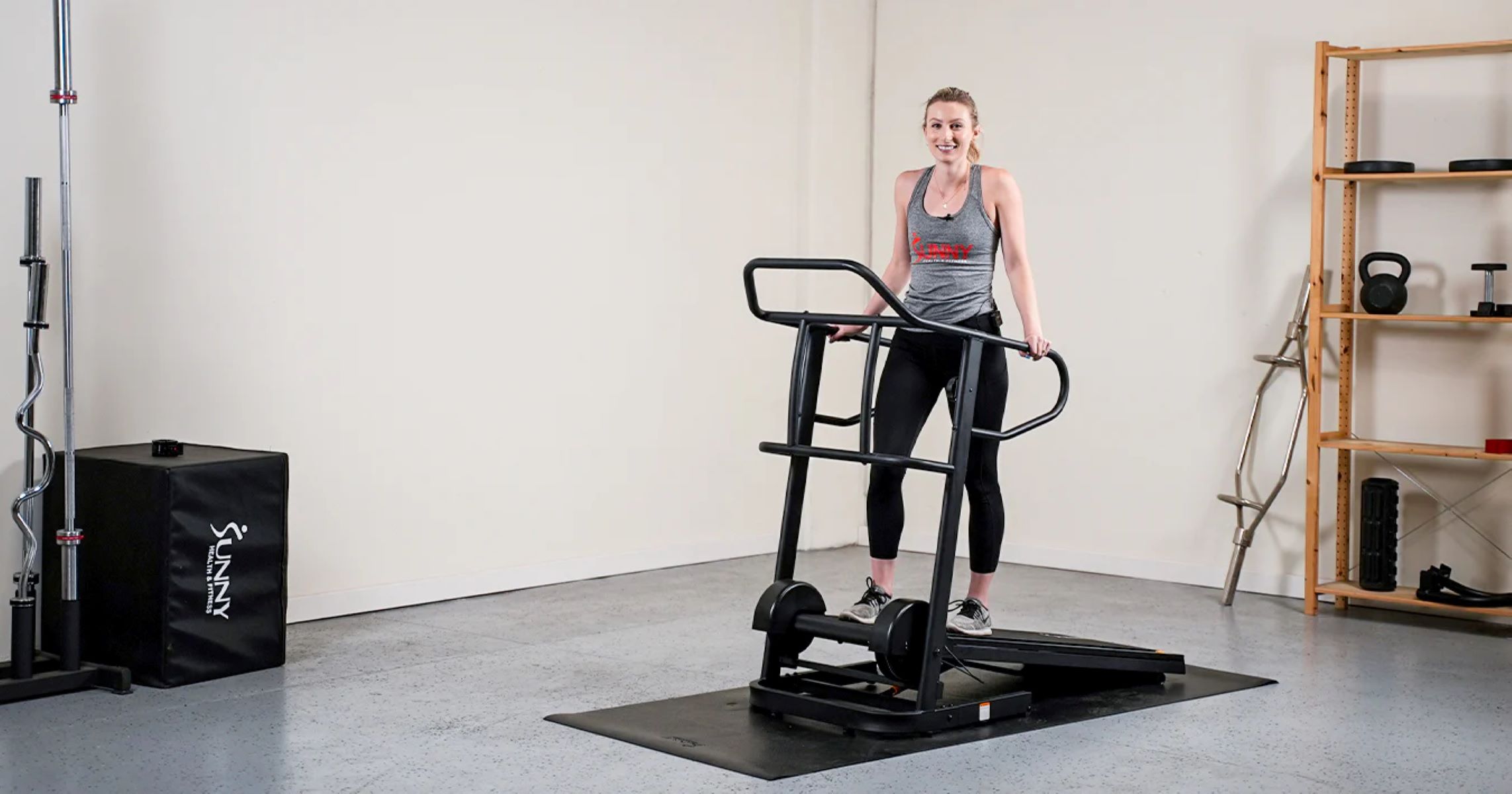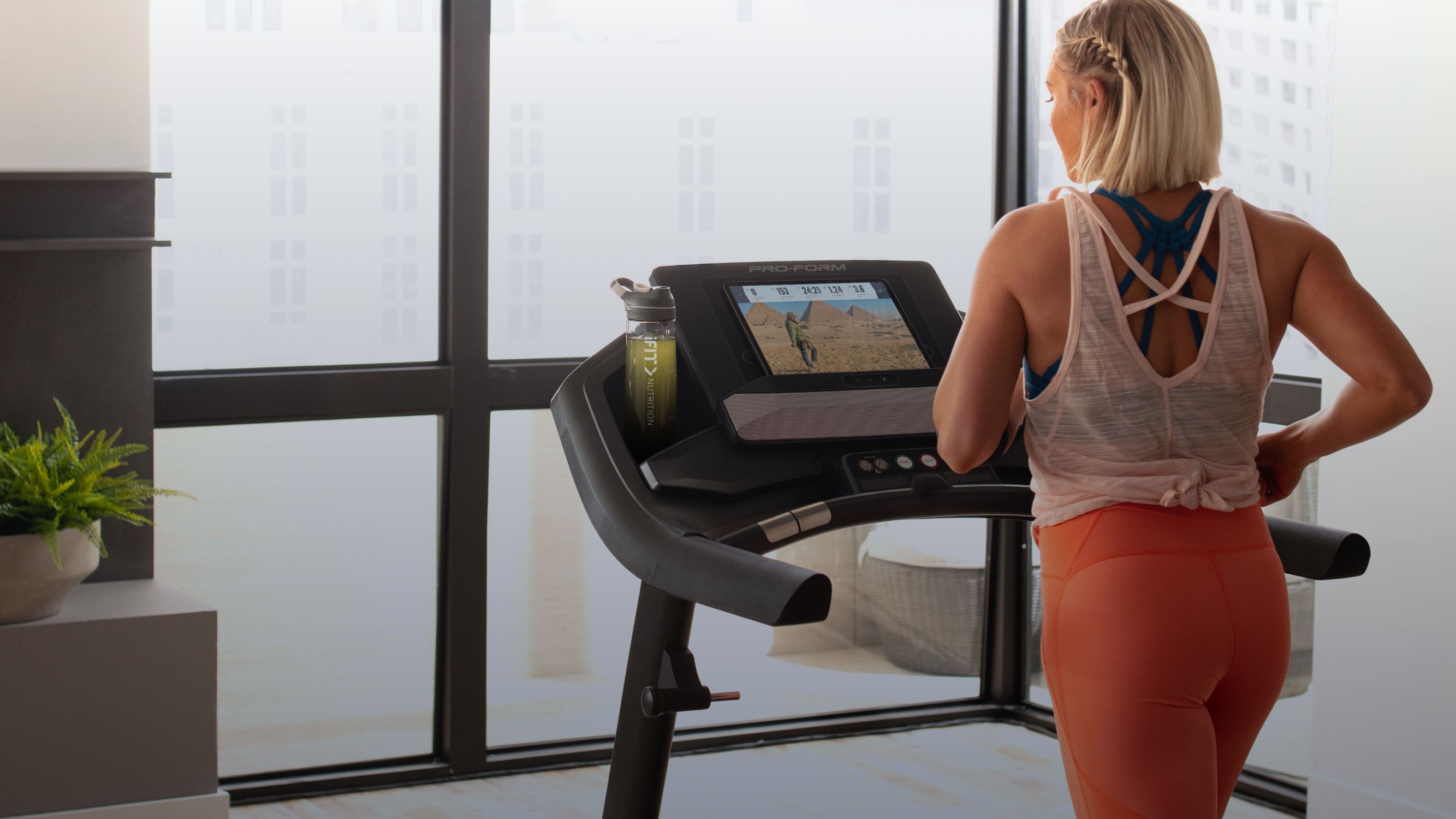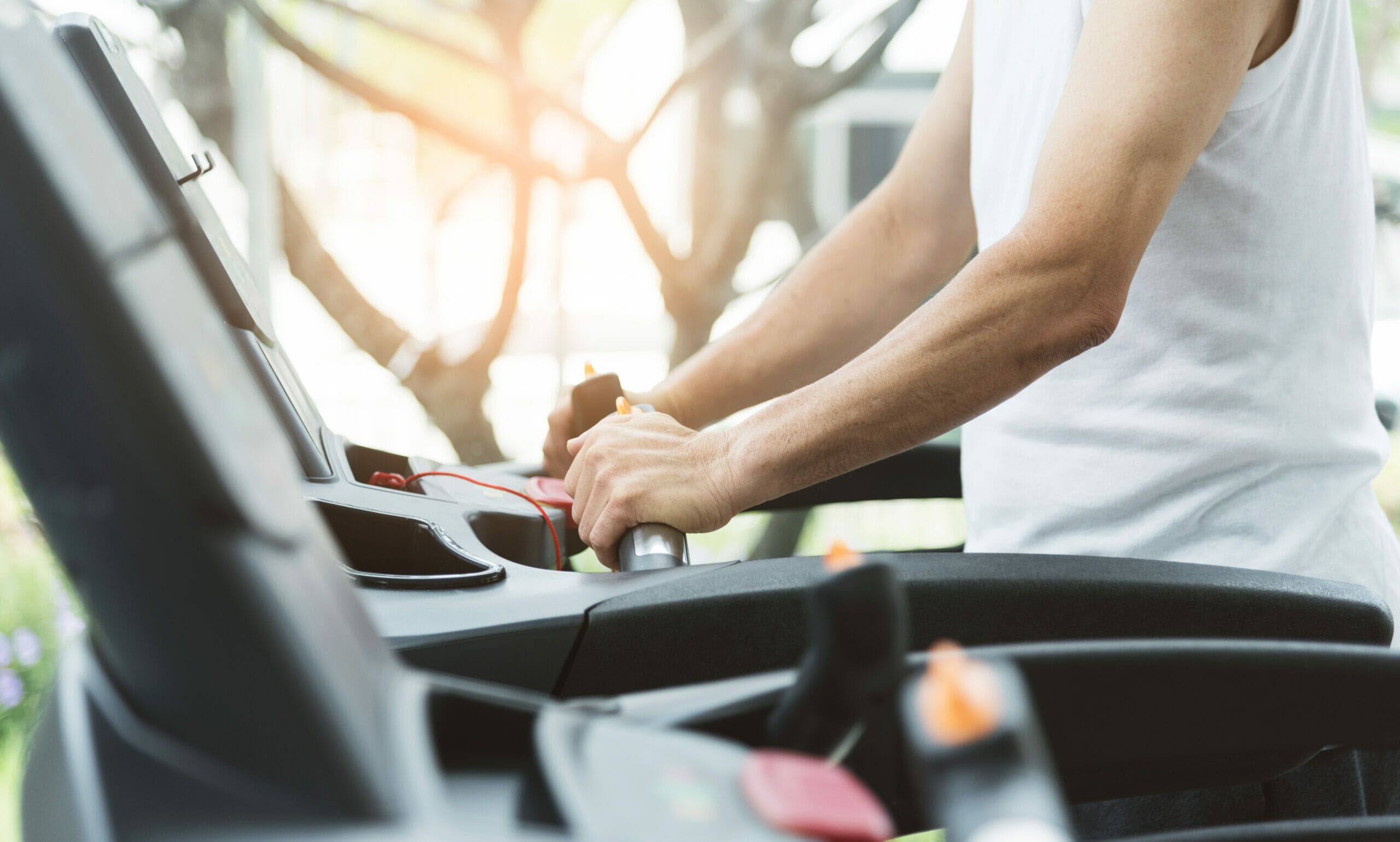

Featured
How To Lose Weight On A Treadmill
Modified: January 22, 2024
Featured: Learn how to effectively lose weight on a treadmill with these expert tips and techniques. Achieve your fitness goals and shed those extra pounds with our comprehensive guide.
Introduction
Welcome to the ultimate guide on how to lose weight on a treadmill! If you’re looking to shed those extra pounds and improve your overall fitness, a treadmill can be a fantastic tool to help you reach your goals. Whether you’re a beginner or an experienced fitness enthusiast, the versatility and convenience of a treadmill make it an excellent choice for your weight loss journey.
Using a treadmill for weight loss offers numerous benefits. Not only does it provide a controlled and predictable environment for exercise, but it also allows you to burn calories and increase your cardiovascular endurance. Additionally, treadmills offer the flexibility to adjust speed, incline, and resistance levels, making it suitable for all fitness levels.
Before we delve into the specifics of using a treadmill for weight loss, it’s important to note that losing weight is a journey that requires dedication and consistency. It’s important to set realistic goals and have a structured plan in place to achieve long-term success. Remember, weight loss is not just about shedding pounds, but about developing a healthier lifestyle and improving overall well-being.
In this guide, we will take you through the necessary steps to create a personalized workout plan, incorporating warm-up and cool-down exercises, interval training, and incline training. We’ll also discuss how to monitor your progress and provide tips on fueling your body for weight loss. Additionally, we’ll explore ways to stay motivated throughout your weight loss journey.
Are you ready to lace up your sneakers, hop on the treadmill, and embark on an exciting and transformative journey towards a healthier and fitter you? Let’s dive in!
Benefits of Using a Treadmill for Weight Loss
Using a treadmill for weight loss comes with a multitude of benefits that can help you achieve your fitness goals more effectively. Here are some key advantages:
- Calorie Burn: One of the biggest benefits of using a treadmill for weight loss is its ability to help you burn calories. The amount of calories burned depends on several factors such as your weight, speed, and incline level. By increasing your heart rate and engaging in cardiovascular activity, a treadmill can assist you in creating a calorie deficit necessary for weight loss.
- Convenience and Accessibility: Treadmills provide the convenience of being accessible anytime in the comfort of your own home or at the gym. With a treadmill, you can exercise regardless of the weather conditions, time restrictions, or availability of outdoor running routes. This accessibility ensures that you can maintain a consistent exercise routine, which is crucial for weight loss success.
- Controlled Environment: Treadmills offer a controlled environment for your workouts. You can adjust the speed, incline, and resistance levels according to your fitness level and goals. This enables you to gradually increase the intensity of your workouts over time and challenge your body in a safe and controlled manner.
- Joint-Friendly Option: If you have joint issues or injuries, a treadmill can be a more joint-friendly alternative to outdoor running. The cushioned surface of a treadmill reduces the impact on your joints, minimizing the risk of injuries and discomfort. This makes it an ideal choice for individuals who are looking to lose weight without putting excess strain on their joints.
- Variety of Workouts: Treadmills offer a wide range of workout options to keep you engaged and motivated. You can choose from various pre-set programs that focus on fat burning, interval training, hill climbs, and more. Additionally, many treadmills are equipped with features such as built-in speakers, TV screens, and virtual training programs, making your workouts more enjoyable and exciting.
By incorporating a treadmill into your weight loss routine, you can take advantage of these benefits and optimize your workouts. However, it’s important to remember that while a treadmill can be a valuable tool, it should be part of a comprehensive weight loss plan that includes a balanced diet and strength training exercises. Together, these strategies will help you achieve sustainable weight loss and improve your overall health and well-being.
Setting a Weight Loss Goal
Before beginning your weight loss journey on a treadmill, it’s essential to set a specific and realistic weight loss goal. Having a clear objective will provide you with direction, motivation, and a benchmark to assess your progress. Here are some tips for setting a weight loss goal:
- Be Specific: Instead of simply aiming to “lose weight,” set a specific target. For example, aim to lose 10 pounds in three months or fit into a specific clothing size. Having a specific goal gives you something concrete to work towards.
- Make it Realistic: Ensure that your weight loss goal is attainable and safe. Losing 1-2 pounds per week is considered a healthy rate of weight loss. Setting unrealistic goals can lead to disappointment and demotivation.
- Consider Non-Scale Goals: While the number on the scale is one way to measure progress, it’s important to also consider non-scale goals. These can include improvements in fitness level, increased energy, or fitting into clothes more comfortably. Non-scale goals provide additional motivation and focus on overall well-being.
- Break it Down: Instead of focusing solely on the end goal, break it down into smaller, achievable milestones. This will make the journey more manageable and give you a sense of accomplishment along the way.
- Set a Timeframe: Determine a timeframe for achieving your weight loss goal. This can help you stay accountable and track your progress. However, remember to be flexible and patient with yourself as weight loss can vary from person to person.
Once you have set your weight loss goal, write it down and keep it visible as a constant reminder. It’s also helpful to share your goal with a friend or family member who can provide support and hold you accountable.
Remember that weight loss is not solely about the number on the scale. It’s important to focus on overall health and well-being. Incorporating regular exercise, like treadmill workouts, along with a nutritious diet, will not only help you lose weight but also improve your overall fitness and quality of life.
With a well-defined weight loss goal in mind, you are ready to embark on your treadmill journey towards a healthier and fitter you.
Creating a Personalized Workout Plan
When it comes to using a treadmill for weight loss, having a personalized workout plan tailored to your fitness level and goals is crucial. Here are the key steps to create an effective workout plan:
- Evaluate Your Fitness Level: Assess your current fitness level to determine where you stand. This will help you gauge your starting point and set realistic expectations for your workouts.
- Define Your Workout Schedule: Decide on the frequency and duration of your treadmill workouts. Aim for at least three to five sessions per week, with each session lasting anywhere from 30 to 60 minutes. Consistency is key, so choose a schedule that you can stick to.
- Vary Your Workouts: To prevent boredom and maintain continuous progress, mix up your treadmill workouts. Incorporate different types of workouts such as interval training, steady-state cardio, and hill climbs. This variety will challenge your body and keep you engaged.
- Set Intensity Levels: Determine your desired intensity levels based on your fitness goals. This can be achieved by adjusting the speed, incline, and resistance settings on the treadmill. Start with a comfortable intensity level and gradually increase it as your fitness improves.
- Incorporate Strength Training: While the treadmill primarily focuses on cardiovascular exercise, it’s important to include strength training in your workout plan. Alternating treadmill sessions with strength training exercises will help build lean muscle mass and boost your metabolism.
- Monitor Progress: Keep track of your progress to stay motivated and assess your improvements. Note down factors such as time, distance, speed, and calories burned during each workout. Regularly review your performance to identify areas of growth and set new targets.
- Listen to Your Body: Pay attention to how your body feels during and after your treadmill workouts. If you experience any pain or discomfort, adjust your intensity level or seek guidance from a fitness professional. It’s important to prioritize safety and avoid overexertion.
Remember, everyone’s fitness journey is unique, so it’s crucial to create a workout plan that suits your individual needs and preferences. If you’re new to exercise or unsure about creating a plan, consulting with a fitness trainer can provide valuable guidance and ensure that you’re on the right track.
By following a personalized workout plan, you can maximize the benefits of using a treadmill for weight loss and achieve your fitness goals efficiently and effectively.
Warm-Up and Cool-Down Exercises
Before diving into your treadmill workout, it’s essential to prioritize warm-up and cool-down exercises. These exercises play a crucial role in preparing your body for exercise and minimizing the risk of injury. Here’s what you need to know:
Warm-Up:
A proper warm-up is essential to increase blood flow to your muscles, elevate your core body temperature, and mentally prepare for your workout. The warm-up should last for approximately 5-10 minutes and include exercises that target the major muscle groups you’ll be using during your treadmill workout. Some effective warm-up exercises include:
- Brisk walking or light jogging
- Dynamic stretches for the legs, such as leg swings, walking lunges, or high knees
- Arm circles, shoulder rolls, or shoulder stretches
- Torso twists or side bends to warm up the core
Remember to start with low intensity and gradually increase the pace and range of motion as you warm up.
Cool-Down:
A proper cool-down is just as important as the warm-up, as it helps to bring your heart rate gradually back to normal and prevent dizziness or post-workout discomfort. The cool-down should also last for approximately 5-10 minutes and consist of low-intensity exercises that promote muscle recovery and flexibility. Some effective cool-down exercises include:
- Walking or slow jogging to gradually reduce your heart rate
- Static stretches for the major muscle groups, holding each stretch for 15-30 seconds
- Deep breathing exercises to promote relaxation and recovery
By incorporating warm-up and cool-down exercises into your treadmill workout routine, you can enhance your overall performance, reduce the risk of injury, and promote faster recovery.
Remember, listening to your body is key. If you experience any discomfort or pain during the warm-up or cool-down exercises, modify the movements or seek guidance from a fitness professional. The goal is to prepare your body for exercise and ensure a safe and effective workout.
Now that you understand the importance of warm-up and cool-down exercises, you’re ready to lace up your sneakers, start with a gentle warm-up, crush your treadmill workout, and finish with a satisfying cool-down.
Interval Training for Maximum Calorie Burn
If you’re looking to maximize calorie burn and accelerate your weight loss on a treadmill, interval training is your secret weapon. Interval training involves alternating between periods of high-intensity exercise and active recovery or rest. This method of training not only increases your calorie burn during the workout but also boosts your metabolism, leading to continued calorie burn even after you’ve finished exercising. Here’s what you need to know about interval training:
How to Incorporate Interval Training:
Interval training can be customized to suit your fitness level and preferences. Here’s a basic structure to get you started:
- Warm-Up: Begin with a 5-10 minute warm-up, gradually increasing your speed and incline.
- Work Interval: Increase your pace and intensity for a set period of time, typically between 30 seconds to 2 minutes. This can be done by increasing your speed, incline, or both.
- Recovery Interval: Slow down the pace, returning to a comfortable speed and reducing the incline. Use this time to catch your breath and recover.
- Repeat: Alternate between work and recovery intervals for a desired number of repetitions, typically 4-8 cycles.
- Cool-Down: Finish your workout with a 5-10 minute cooldown, gradually reducing the intensity and returning to a comfortable pace.
Tips for Effective Interval Training:
- Gradually Increase Intensity: Start with shorter work intervals and longer recovery intervals if you’re new to interval training. As you build endurance, gradually increase the intensity and duration of your work intervals.
- Listen to Your Body: Pay attention to how your body responds to the work and recovery intervals. Push yourself during the work intervals, but also be mindful of your limits and make adjustments as needed.
- Vary the Workouts: To keep your workouts challenging and avoid plateaus, mix up the length, intensity, and type of intervals. Experiment with different combinations of speed, incline, and even interval durations.
- Progress Over Time: As your fitness improves, aim to increase the intensity and duration of your work intervals. This gradual progression will help you continue challenging your body and achieving greater calorie burn.
Interval training on a treadmill provides a time-efficient and effective method to maximize your calorie burn and enhance weight loss. However, always remember to prioritize safety and listen to your body. If you have any underlying health conditions or concerns, consult with a healthcare professional before starting any high-intensity exercise program.
By incorporating interval training into your treadmill workouts, you can take your weight loss efforts to the next level and achieve remarkable results in less time.
Incorporating Incline Training
When it comes to using a treadmill for weight loss, don’t overlook the power of incline training. Incorporating incline into your workouts adds an extra challenge and can significantly boost your calorie burn. Here’s why you should consider incorporating incline training and how to do it effectively:
The Benefits of Incline Training:
Incline training on a treadmill offers several benefits for weight loss:
- Increased Calorie Burn: Walking or running on an incline requires more effort from your leg muscles compared to exercising on a flat surface. This increased resistance leads to a higher calorie burn, helping you achieve your weight loss goals more efficiently.
- Engages More Muscle Groups: Incline training targets a wider range of muscles than flat surface running or walking. It particularly works your calves, hamstrings, glutes, and lower back, helping to tone and strengthen these areas.
- Improved Cardiovascular Fitness: Walking or running on an incline elevates your heart rate and challenges your cardiovascular system, leading to improved endurance and overall fitness.
- Reduced Joint Impact: Incline training can be a lower-impact option compared to running or walking on a flat surface. The incline reduces the impact on your joints, making it a suitable choice for individuals with joint sensitivities or injuries.
How to Incorporate Incline Training:
Here are some tips to effectively incorporate incline training into your treadmill workouts:
- Gradually Increase: If you’re new to incline training, start with a small incline of around 1-2% and gradually increase it as your fitness level improves. Aim for an incline that challenges you without compromising your form or causing excessive fatigue.
- Vary the Incline: Experiment with different incline levels during your workouts. Mix it up by doing intervals of varying incline, such as hill climbs followed by a flat surface or downhill. This variety keeps your workouts interesting and prevents your body from adapting to a fixed incline.
- Combine with Speed: To maximize your calorie burn, try combining incline with speed intervals. Alternate between periods of walking or running on an incline and flat surface at a higher speed to challenge your body and increase intensity.
- Focus on Form: When walking or running on an incline, it’s essential to maintain good form. Engage your core, keep an upright posture, and take shorter strides to avoid putting excessive strain on your lower back and joints.
- Include Recovery: Don’t forget to include recovery periods where you lower the incline or walk on a flat surface to catch your breath and allow your muscles to recover.
Incorporating incline training into your treadmill workouts can take your weight loss efforts to new heights. However, always listen to your body, start slowly, and gradually progress to more challenging incline levels. If you have any concerns or existing health conditions, consult with a fitness professional or medical expert before starting incline training.
So, kick up that incline, feel the burn, and watch as your weight loss goals become more achievable than ever before!
Monitoring Your Progress
When it comes to achieving your weight loss goals on a treadmill, monitoring your progress is key. Tracking your performance and progress not only keeps you motivated but also helps you make necessary adjustments to your workout routine. Here are some effective ways to monitor your progress:
Keep a Workout Journal:
Maintaining a workout journal is an excellent way to track your treadmill workouts and monitor your progress. Record important details such as the date, time, duration, distance, speed, incline, and any other relevant information about each session. Additionally, jot down how you felt during and after the workout, any challenges you encountered, and any personal observations. Regularly reviewing your journal will allow you to spot trends and patterns, identify areas where you can improve, and celebrate milestones along the way.
Utilize Fitness Apps or Trackers:
Take advantage of various fitness apps and trackers available on smartphones or wearable devices. These apps can track your workouts, monitor your heart rate, estimate calorie burn, analyze your pace, and provide detailed summaries of your treadmill sessions. Some apps even allow you to set goals, join challenges, and sync with other platforms, making it easy to monitor your progress over time. Choose an app or tracker that suits your needs and preferences, and consistently log your treadmill workouts to stay accountable and motivated.
Measurements and Body Composition:
While the number on the scale is just one measure of progress, it’s important to consider other measurements and indicators of body composition. Take body measurements such as waist, hip, thigh, and arm circumferences regularly to track changes in your body shape. Additionally, consider using methods like skinfold calipers or bioelectrical impedance to measure your body fat percentage. These measurements can provide a more comprehensive view of your progress and help you assess changes in body composition, even if the scale doesn’t move significantly.
Progress Photos:
Capturing progress photos can be a powerful visual tool to track your transformation over time. Take front, side, and back photos at consistent intervals, such as every four weeks. Comparing these photos allows you to see changes in your body shape and provides motivation to keep pushing forward.
Set Milestones and Goals:
Setting milestones and goals along your weight loss journey can help you stay focused and motivated. Break down your weight loss or fitness goals into smaller, achievable milestones. Celebrate each milestone reached, and set new goals to keep progressing. Consider both non-scale goals, such as improved endurance or fitting into a specific clothing size, as well as scale-related goals. Having tangible targets to aim for keeps you engaged and excited about your progress.
Incorporating these methods of monitoring progress will not only provide a clearer picture of your fitness journey but also help you celebrate achievements and make adjustments when needed. Remember that progress may not always be linear, so be patient and stay committed to your goals. With consistent effort and monitoring, you’ll be well on your way to achieving your weight loss goals on the treadmill.
Fueling Your Body for Weight Loss
When it comes to weight loss on a treadmill, nutrition plays a crucial role in fueling your body and supporting your fitness journey. To maximize your efforts and promote healthy weight loss, it’s important to focus on proper nutrition. Here are some key tips for fueling your body:
Eat a Balanced Diet:
Aim for a well-balanced diet that includes a variety of whole foods. Focus on consuming lean proteins, such as chicken, fish, tofu, and legumes, as they help build and repair muscles after your treadmill workouts. Include plenty of fruits and vegetables, whole grains, and healthy fats like avocados and nuts. Avoid highly processed foods, sugary snacks, and excessive amounts of saturated fats. Prioritize nutrient-dense foods that provide essential vitamins and minerals for optimal health and weight loss.
Hydrate Properly:
Staying hydrated is key for both your overall health and weight loss journey. Proper hydration supports digestion, enhances metabolism, and helps regulate appetite. Aim to drink at least 8-10 cups of water per day, and adjust your intake based on your activity level and environment. If you’re exercising intensely on the treadmill, consider replacing lost electrolytes with a sports drink or coconut water.
Create a Calorie Deficit:
To lose weight, you need to create a calorie deficit by consuming fewer calories than you burn. While it’s important to fuel your body with adequate energy, be mindful of portion sizes and overall calorie intake. Calculate your daily calorie needs based on your age, gender, weight, height, and activity level. Aim for a moderate calorie deficit to promote gradual and sustainable weight loss. It’s also essential to listen to your body’s hunger and fullness cues to establish a healthy relationship with food.
Timing of Meals and Snacks:
Consider the timing of your meals and snacks to optimize your treadmill workouts. Eat a small meal or snack containing carbohydrates and protein about 1-2 hours before your workout to provide energy. After your workout, replenish your body with a balanced post-workout meal or snack to aid in muscle recovery and repair. Eating regular meals and snacks throughout the day helps maintain stable blood sugar levels and keeps your energy levels stable.
Listen to Your Body:
Remember that everyone’s nutritional needs are different. Focus on nourishing your body with whole, nutrient-dense foods, but also listen to your body’s individual cues and preferences. Pay attention to how different foods make you feel and adjust your diet accordingly. If you have any specific dietary restrictions or concerns, consult with a registered dietitian or healthcare professional.
Consistency and Long-Term Approach:
Consistency is key when it comes to nutrition for weight loss. Healthy eating habits and fueling your body properly should be a sustainable, long-term approach rather than a temporary restrictive diet. Cultivate a positive mindset towards food and aim for a balance between nourishing your body and enjoying occasional treats. Remember that progress takes time, so be patient and focus on making lasting changes.
By fueling your body with the right nutrients, you’ll not only support your weight loss goals but also enhance your overall well-being. Combine a balanced diet with regular treadmill workouts, and you’ll be on the path to achieving your desired weight and a healthier lifestyle.
Staying Motivated on Your Weight Loss Journey
Embarking on a weight loss journey on a treadmill requires dedication, perseverance, and most importantly, motivation. Staying motivated throughout the process is crucial to achieving your goals. Here are some effective strategies to help you stay motivated and on track:
Set Realistic and Meaningful Goals:
Start by setting realistic and meaningful goals that resonate with you. Make sure your goals are specific, measurable, attainable, relevant, and time-bound (SMART goals). Having a clear vision of what you want to achieve will fuel your motivation and keep you focused on your weight loss journey.
Celebrate Non-Scale Victories:
Weight loss is not only about the number on the scale. Celebrate non-scale victories, such as increased energy levels, improved sleep, or fitting into smaller clothing sizes. Acknowledging these accomplishments will boost your confidence and reinforce the positive changes happening on your journey.
Find an Accountability Partner:
Having someone to hold you accountable can make a world of difference in staying motivated. Find a workout buddy or a friend with similar goals to join you on your treadmill workouts. You can provide each other with support, encouragement, and motivation on those days when it feels challenging to stay on track.
Mix up Your Workouts:
Avoid falling into a workout routine that feels monotonous and boring. Keep things fresh and exciting by trying new treadmill workouts or incorporating other forms of exercise into your routine. By mixing up your workouts, you’ll stay engaged, challenge different muscle groups, and prevent burnout.
Reward Yourself:
Create a system of rewards to celebrate your milestones and achievements along the way. Treat yourself to something you enjoy, whether it’s a massage, a new workout outfit, or a day off to relax. These rewards serve as motivation to keep pushing forward and remind yourself of the progress you’ve made.
Find Inspiration:
Surround yourself with sources of inspiration that align with your goals. Follow fitness influencers on social media, read success stories of others who have achieved significant weight loss, or join online communities for support and motivation. Seeing the success and progress of others can inspire you to keep going and stay motivated.
Track and Celebrate Your Progress:
Continuously track your progress and celebrate your achievements, both big and small. Use tools like a workout journal, progress photos, or online tracking apps to keep track of your journey. Reflecting on how far you’ve come can reignite your motivation and remind you of the progress you’ve already made.
Practice Self-Care:
Remember to prioritize self-care throughout your weight loss journey. Focus on getting enough restful sleep, managing stress levels, and taking time for activities that bring you joy and relaxation. When you take care of your overall well-being, you’ll have more energy and motivation to stay committed to your goals.
Positive Self-Talk:
Practice positive self-talk and cultivate a mindset of self-compassion and self-belief. Replace negative thoughts or self-doubt with positive affirmations that reinforce your capabilities and determination. Remind yourself of your progress and the reasons why you started this journey in the first place. Believe in yourself and your ability to achieve your weight loss goals.
Staying motivated on your weight loss journey may have its ups and downs. But by incorporating these strategies into your routine, you’ll be better equipped to stay on track, overcome any obstacles, and reach your ultimate goals on the treadmill.
Conclusion
Congratulations on reaching the end of this comprehensive guide on how to lose weight on a treadmill! We have explored various aspects of using a treadmill for weight loss, from understanding the benefits, setting goals, creating a personalized workout plan, and incorporating interval training and incline workouts for maximum calorie burn. We’ve also discussed the importance of warm-up and cool-down exercises, monitoring your progress, fueling your body with nutritious foods, and staying motivated throughout your weight loss journey.
Remember, weight loss is a journey that requires dedication, consistency, and patience. It’s essential to set realistic goals, create a structured workout plan that suits your fitness level and preferences, and fuel your body with the right nutrients. By incorporating a treadmill into your fitness routine, you have a powerful tool to help you shed pounds, improve cardiovascular health, and enhance your overall well-being.
Throughout your weight loss journey, it’s important to stay motivated and focused on your goals. Find what inspires you, celebrate your victories, and ensure you have a support system in place. Use exercise as a form of self-care and practice positive self-talk to maintain a healthy mindset.
Remember that every individual’s weight loss journey is unique, so listen to your body, make adjustments when needed, and be kind to yourself. Losing weight is not just about reaching a number on the scale; it’s about developing a sustainable and healthy lifestyle that supports your overall well-being.
Now, armed with knowledge and tips from this guide, it’s time to lace up your sneakers, step onto that treadmill, and embark on your exciting and transformative weight loss journey. Remember, you have the power to achieve your goals and create a better, healthier version of yourself.
So, let’s get started and make every step count towards your weight loss success!









